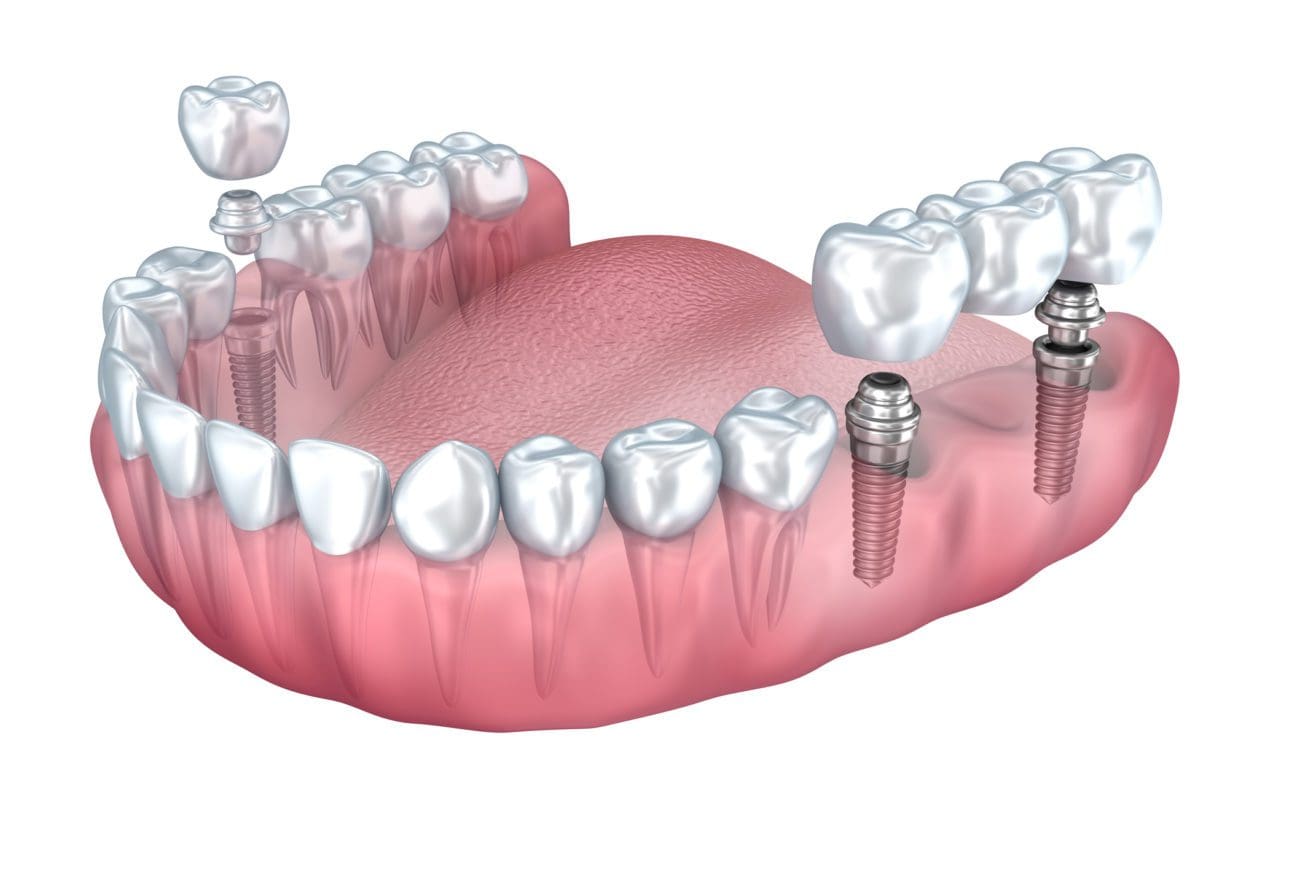A Biased View of Dental Sense
A Biased View of Dental Sense
Blog Article
The Basic Principles Of Dental Sense
Table of ContentsDental Sense Can Be Fun For Everyone10 Simple Techniques For Dental SenseHow Dental Sense can Save You Time, Stress, and Money.Fascination About Dental Sense
are medical devices surgically implanted right into the jaw to restore a person's ability to eat or their appearance. They supply support for synthetic (fake) teeth, such as crowns, bridges, or dentures. When a tooth is lost due to injury or illness, a person can experience difficulties such as quick bone loss, faulty speech, or modifications to chewing patterns that lead to discomfort.Oral dental implant systems include an oral implant body and dental implant joint and may additionally include an abutment addiction screw. Root canal procedure. The dental implant body is surgically placed in the jawbone in location of the tooth's root. The oral implant abutment is typically affixed to the dental implant body by the abutment fixation screw and expands through gum tissues right into the mouth to support the affixed artificial teeth
(https://www.ted.com/profiles/48604569/about)Structure of The Oral Implant System picking oral implants, speak with your dental service provider concerning the possible benefits and risks, and whether you are a candidate for the procedure. Points to take into consideration: Your general health and wellness is an essential consider determining whether you are a great candidate for oral implants, how long it will certainly take to heal, and how long the dental implant might remain in place.
Smoking cigarettes may influence the healing procedure and reduce the lasting success of the implant. The healing procedure for the implant body might take several months or longer, throughout which time you usually have a short-term abutment in area of the tooth. the dental implant procedure: Thoroughly adhere to the dental hygiene guidelines provided to you by your dental company.
Not known Incorrect Statements About Dental Sense
Implant failure can lead to the demand for another surgery to repair or change the dental implant system. Recovers the ability to chew Restores cosmetic look Aids keep the jawbone from diminishing because of bone loss Maintains the health of the surrounding bone and gum tissues Helps keep nearby (neighboring) teeth secure Improves lifestyle Damage to surrounding natural teeth during implant placement Injury to the surrounding tissues during surgical procedure, such as sinus opening Injury throughout surgery (as an example, fracture of bordering jawbone) Poor feature, such as really feeling like the teeth do not attack with each other normally A sensation that the tooth is loose or turning in position arising from a joint screw loosening up Implant body failing (looseness of the implant body) as a result of systemic infection, which might be more probable in patients with unchecked diabetes due to local infection in bone and gum tissues supporting the implant body as a result of delayed recovery, which might be more probable in individuals that smoke Difficulty cleaning the gum tissues around the dental implant, resulting in poor dental health Neglected gum disease Post-surgical numbness as a result of nerve impingement or damages Constantly inform healthcare carriers and imaging service technicians that you have oral implants prior to any magnetic vibration imaging (MRI) or x-ray procedures.
FDA is not aware of any kind of adverse occasions reported for MRI or x-ray procedures with dental implants. Oral implants systems are usually constructed from materials that adhere to worldwide consensus criteria of the International Organization for Standardization (ISO) or ASTM International. These standards have details of what makes my response a secure material.

An oral implant is a structure that replaces a missing out on tooth. With screw-like tools, the specialist inserts an implant into the jawbone, and it functions as a support for a fabricated tooth, called a crown. A tool called an abutment connects the artificial tooth to the dental implant. The crown is tailor-made to fit the person's mouth and match the color of their teeth.
Facts About Dental Sense Revealed
Some people are not qualified for oral implant surgical treatment. It is for dental surgeons to operate on people with: severe illnessuncontrollable metabolic diseasebone or soft cells disease or infectionIf these problems are solved, an individual can have the surgical procedure. In, oral surgeons avoid running on people with: If individuals with any one of the above undergo oral implant surgical treatment, there is a greater risk of the implant failing.

Oral implant surgical procedure is an individualized process. It's not the same for everybody. The following provides a basic review of what you can expect your dental professional, dental specialist, periodontist or prosthodontist to do: Put the implant surgically. Provide you time to recover. Attach the post and last crown, bridge or denture.
Next, your doctor will meticulously position the oral implant into your jaw. If your implant is near the front of your mouth, your dental practitioner will make a momentary tooth for you to wear till you recover.
Everything about Dental Sense
Your supplier can tell you what to anticipate in your scenario. During the recovery stage, your jawbone needs to fuse to the dental implant. This procedure, called osseointegration, is important for stability and lasting success. This procedure can take anywhere from three to 9 months. In some instances, it may take much longer.
Once your implant heals, your dental expert can attach the abutment (tiny connector blog post) and your final reconstruction (crown, bridge or denture). This generally takes concerning one hour to finish and may require a second minor surgery. You should not really feel any type of pain during your dental implant treatment since your copyright will certainly utilize medication to numb your periodontals.
Report this page